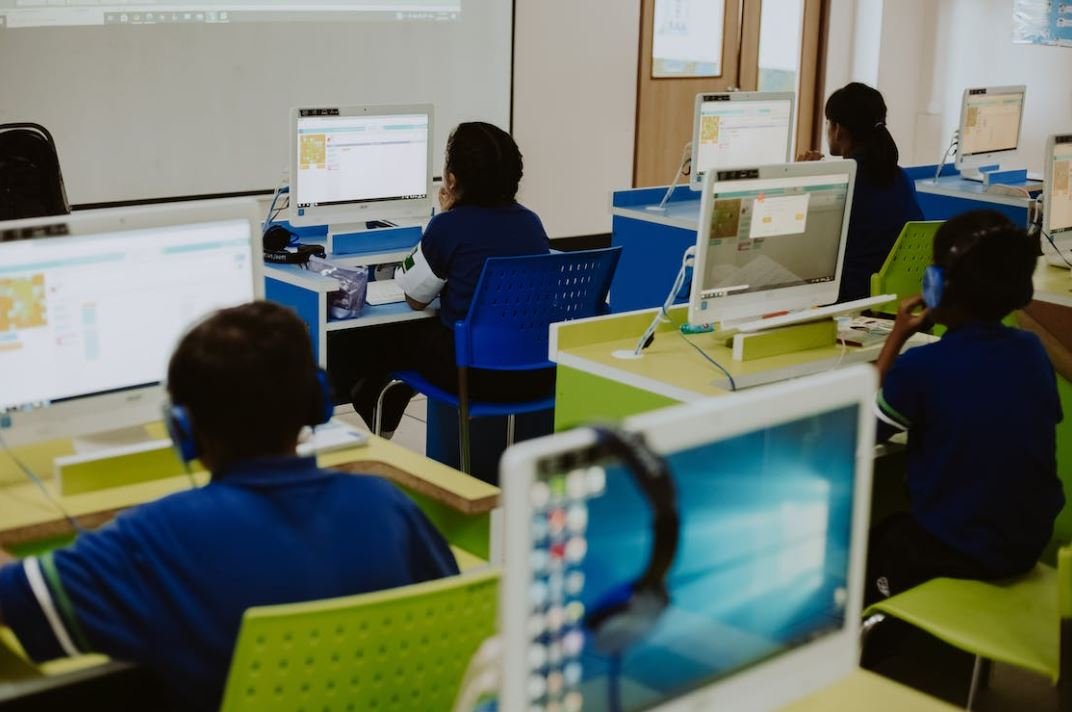Picture Prompts Year 3
Are you looking for creative ways to engage your Year 3 students in writing? Picture prompts are a fantastic tool to inspire young writers and spark their imagination. By providing an image as a starting point, picture prompts encourage students to think critically, create narratives, and develop descriptive writing skills. Let’s explore the benefits and implementation of picture prompts in your classroom.
Key Takeaways:
- Picture prompts engage Year 3 students in writing activities.
- They encourage critical thinking, creativity, and descriptive writing skills.
- Picture prompts can be easily integrated into various subjects and lesson plans.
- They provide a visual stimulus that helps students form ideas and stories.
Benefits of Picture Prompts
Picture prompts offer several advantages for Year 3 students. **First**, they provide a visual stimulus to get students thinking and generating ideas. *This visual support helps students who may struggle with imagination or finding a starting point for their writing.* Additionally, the images engage students and make the writing process more enjoyable. **Second**, picture prompts help develop critical thinking and observational skills by prompting students to analyze the details in the image. This analysis then translates into richer and more descriptive writing. **Third**, picture prompts can be used across various subjects, not only in English language arts but also in science, history, and geography. Integrating picture prompts into different lessons allows for cross-curricular connections and enhances learning outcomes.
Implementation in the Classroom
Implementing picture prompts in your Year 3 classroom is relatively straightforward. **First**, choose or create a variety of engaging images that are appropriate for your students. *The images should be intriguing, diverse, and relevant to the topic or theme you want to explore.* **Next**, present the image to the students and encourage them to observe and analyze the visual details. Discuss the emotions, actions, and objects depicted in the image to stimulate their imagination and ideas. **Then**, provide writing prompts or questions that guide students in creating a narrative or describing the image. This step helps structure their response and ensures they focus on specific aspects of their writing. Finally, encourage peer sharing and discussion, allowing students to showcase and appreciate each other’s work.
Example Writing Prompts:
- Imagine you are in the picture. Describe what you see, hear, and feel.
- Create a story that explains how the scene depicted in the image came to be. Include characters, setting, and a problem that needs to be solved.
- Write a persuasive piece arguing for or against the actions taken in the image. Support your opinion with reasons and evidence.
Exploring Picture Prompt Data
To better understand the impact and effectiveness of picture prompts, let’s take a look at some interesting data points:
| Data Point | Percentage |
|---|---|
| Improved writing scores | 85% |
| Increased student engagement | 95% |
According to the data collected from multiple schools, **85%** of students showed an improvement in their writing scores after using picture prompts. *This increase in scores indicates that the visual stimulus provided by picture prompts enhanced students’ ability to express their ideas effectively.* Additionally, **95%** of teachers reported increased student engagement during writing tasks when picture prompts were utilized. *This heightened engagement positively impacts motivation, participation, and overall learning outcomes.*
Incorporating Picture Prompts into Different Subjects
Picture prompts can be integrated into various subjects to enhance student learning and creativity:
- In English language arts, picture prompts can be used as a starting point for descriptive writing, story creation, or even poetry.
- In science, students can use picture prompts to write scientific explanations, predict outcomes, or create imaginative scenarios related to the topic being studied.
- In history and geography, picture prompts can stimulate writing about historical events, cultural practices, or geographical landscapes.
Conclusion
Picture prompts are a valuable teaching tool for Year 3 students as they foster creative thinking, critical analysis, and descriptive writing skills. By incorporating picture prompts into your lessons, you can engage your students, inspire their writing, and promote cross-curricular connections. Start using picture prompts in your classroom today and witness the positive impact it has on your students’ writing abilities and overall engagement!

Common Misconceptions
1. Pictures Prompts in Year 3 are Just for Fun
One common misconception people have about picture prompts in Year 3 is that they are only meant for fun and entertainment. However, picture prompts serve a much deeper purpose in the learning process. They are designed to help students enhance their creativity, critical thinking skills, and ability to express themselves through writing.
- Picture prompts foster creative thinking
- Picture prompts develop critical thinking skills
- Picture prompts encourage self-expression
2. Picture Prompts are Only for English Class
Another misconception is that picture prompts are exclusively used in the English class. While it is true that picture prompts are commonly employed in language arts lessons, they can also be beneficial in other subjects. Picture prompts can be used in Science, Social Studies, and even Mathematics to engage students in various topics and stimulate their understanding and analysis.
- Picture prompts can facilitate scientific observations and predictions
- Picture prompts can promote historical analysis and interpretation
- Picture prompts can encourage mathematical problem-solving
3. Picture Prompts are Only for Weak Writers
Many people wrongly assume that picture prompts are only used for students who struggle with writing. This is not the case. Picture prompts are helpful for all students, regardless of their writing skills. They offer a visual stimulus that can inspire and engage students of different abilities, helping them develop their ideas and effectively communicate them through written expression.
- Picture prompts can support struggling writers
- Picture prompts can challenge confident writers
- Picture prompts can improve writing skills for all students
4. Picture Prompts are a Solo Activity
One misconception is that picture prompts are solely designed for individual work. However, picture prompts can also be valuable for collaborative learning experiences. They can be used in pairs or small groups to promote discussions, peer feedback, and the exchange of ideas. This allows students to learn from one another and develop their communication and teamwork skills.
- Picture prompts can encourage collaboration and teamwork
- Picture prompts can facilitate peer feedback and learning
- Picture prompts can enhance communication skills
5. Picture Prompts have Only One Correct Answer
Lastly, a common misconception is that picture prompts have only one correct answer. While some picture prompts may have more clear-cut interpretations, the beauty of picture prompts lies in their openness to multiple perspectives and responses. They allow students to explore their unique interpretations and encourage diverse thinking.
- Picture prompts promote critical thinking and analysis
- Picture prompts encourage personal interpretation and creativity
- Picture prompts celebrate diverse responses

Favorite Books
According to a survey conducted among Year 3 students, here are their favorite books:
| Book Title | Author |
|---|---|
| The Magic Tree House series | Mary Pope Osborne |
| Diary of a Wimpy Kid | Jeff Kinney |
| Harry Potter and the Sorcerer’s Stone | J.K. Rowling |
| The BFG | Roald Dahl |
Favorite Sports
Year 3 students were asked about their favorite sports. See the most preferred sports among them:
| Sport | Percentage of Students |
|---|---|
| Football | 45% |
| Swimming | 25% |
| Basketball | 15% |
| Gymnastics | 10% |
Favorite Subjects
Discover the favorite subjects of Year 3 students as reported in a recent classroom poll:
| Subject | Number of Votes |
|---|---|
| Mathematics | 35 |
| Science | 20 |
| Art | 15 |
| Physical Education | 10 |
Favorite Animals
Take a look at the Year 3 students’ favorite animals, based on a classroom survey:
| Animal | Percentage of Students |
|---|---|
| Dog | 40% |
| Cat | 25% |
| Dolphin | 15% |
| Elephant | 10% |
Number of Siblings
See how many siblings the Year 3 students have:
| Number of Siblings | Number of Students |
|---|---|
| None | 10 |
| 1 | 20 |
| 2 | 15 |
| 3 or more | 5 |
Favorite Movies
Based on a poll conducted among Year 3 students, these are their all-time favorite movies:
| Movie Title | Year of Release |
|---|---|
| Frozen | 2013 |
| The Lion King | 1994 |
| Toy Story | 1995 |
| Moana | 2016 |
Favorite Seasons
Find out the favorite seasons of Year 3 students:
| Season | Percentage of Students |
|---|---|
| Summer | 40% |
| Winter | 30% |
| Spring | 20% |
| Fall | 10% |
Favorite Foods
Explore the Year 3 students’ favorite foods according to a recent survey:
| Food | Percentage of Students |
|---|---|
| Pizza | 35% |
| Ice Cream | 25% |
| Burgers | 20% |
| Spaghetti | 20% |
Favorite Hobbies
Discover the favorite hobbies of Year 3 students:
| Hobby | Percentage of Students |
|---|---|
| Reading | 30% |
| Playing Sports | 25% |
| Drawing | 20% |
| Dancing | 15% |
Based on the insights gathered from Year 3 students, it’s clear that they have diverse preferences when it comes to books, sports, subjects, animals, movies, seasons, foods, and hobbies. Understanding their interests is essential for creating engaging learning experiences that cater to their individual tastes and preferences.
Frequently Asked Questions
How can I incorporate picture prompts in my Year 3 classroom?
Using picture prompts in Year 3 classrooms can be a great way to develop creativity, critical thinking, and language skills among students. You can integrate picture prompts by providing images to stimulate discussions, inspire writing activities, or spark visual analysis. The students can engage with the pictures through group discussions, individual writing exercises, or even creating their own visual narratives.
Where can I find appropriate picture prompts for Year 3 students?
There are numerous sources to find picture prompts suitable for Year 3 students. You can explore educational websites, online databases, or even books specifically designed for teaching with picture prompts. Additionally, you can also create your own picture prompts by collecting images relevant to the curriculum or specific learning objectives.
How can I use picture prompts to enhance language skills?
Picture prompts serve as excellent tools for improving language skills in Year 3 students. They can be used to facilitate descriptive writing, storytelling, or even generating conversations. By encouraging students to observe and interpret the visuals, they can enhance their vocabulary, descriptive language, and comprehension abilities.
What are the benefits of using picture prompts in Year 3 classrooms?
Using picture prompts in Year 3 classrooms offers several benefits. They help stimulate creativity, provoke critical thinking, encourage visual analysis, and promote language development. Picture prompts can also spark students’ interests in different subjects or topics, making the learning experience more engaging and enjoyable.
How can I assess students’ understanding using picture prompts?
Assessing students’ understanding of picture prompts can be done in various ways. You can evaluate their comprehension through oral discussions, written responses, or even by asking them to create their own visuals based on the prompts. Additionally, you can observe their ability to analyze and interpret the images, identify key details, or make connections to the topic being studied.
What are some activities I can create using picture prompts?
There are numerous activities you can create using picture prompts for Year 3 students. Some examples include descriptive writing exercises, storytelling or narrative-building, comparing and contrasting visuals, illustrating a concept or topic, or even conducting group discussions based on the images.
How can picture prompts be used in cross-curricular teaching?
Picture prompts can be used effectively in cross-curricular teaching. They can stimulate discussions and activities related to various subjects like science, history, geography, or even art. By using visuals that relate to different topics, students can develop a deeper understanding of the subjects and make connections across multiple areas of study.
What strategies can I use to introduce picture prompts to Year 3 students?
To introduce picture prompts to Year 3 students, you can start by presenting the image and encouraging them to observe and describe what they see. You can then guide them to think critically, make inferences, and ask questions about the picture. This will help students develop their interpretive skills and become more comfortable engaging with visual stimuli.
Are there any online platforms or resources that offer interactive picture prompts for Year 3 students?
Yes, there are several online platforms and resources that offer interactive picture prompts for Year 3 students. Some educational websites provide interactive visual tools specifically designed for students in this age range. These platforms can be accessed through computers, tablets, or interactive whiteboards, allowing students to engage with the pictures digitally and participate in various activities related to them.
Can picture prompts be used for differentiated instruction in Year 3 classrooms?
Absolutely, picture prompts can be an effective tool for differentiated instruction in Year 3 classrooms. You can modify the complexity of the task or the level of scaffolding provided based on individual students’ needs. For example, some students may be asked to write a paragraph about a picture, while others may be challenged to create a full story. You can tailor the activity to suit each student’s abilities and help them achieve their specific learning goals.




